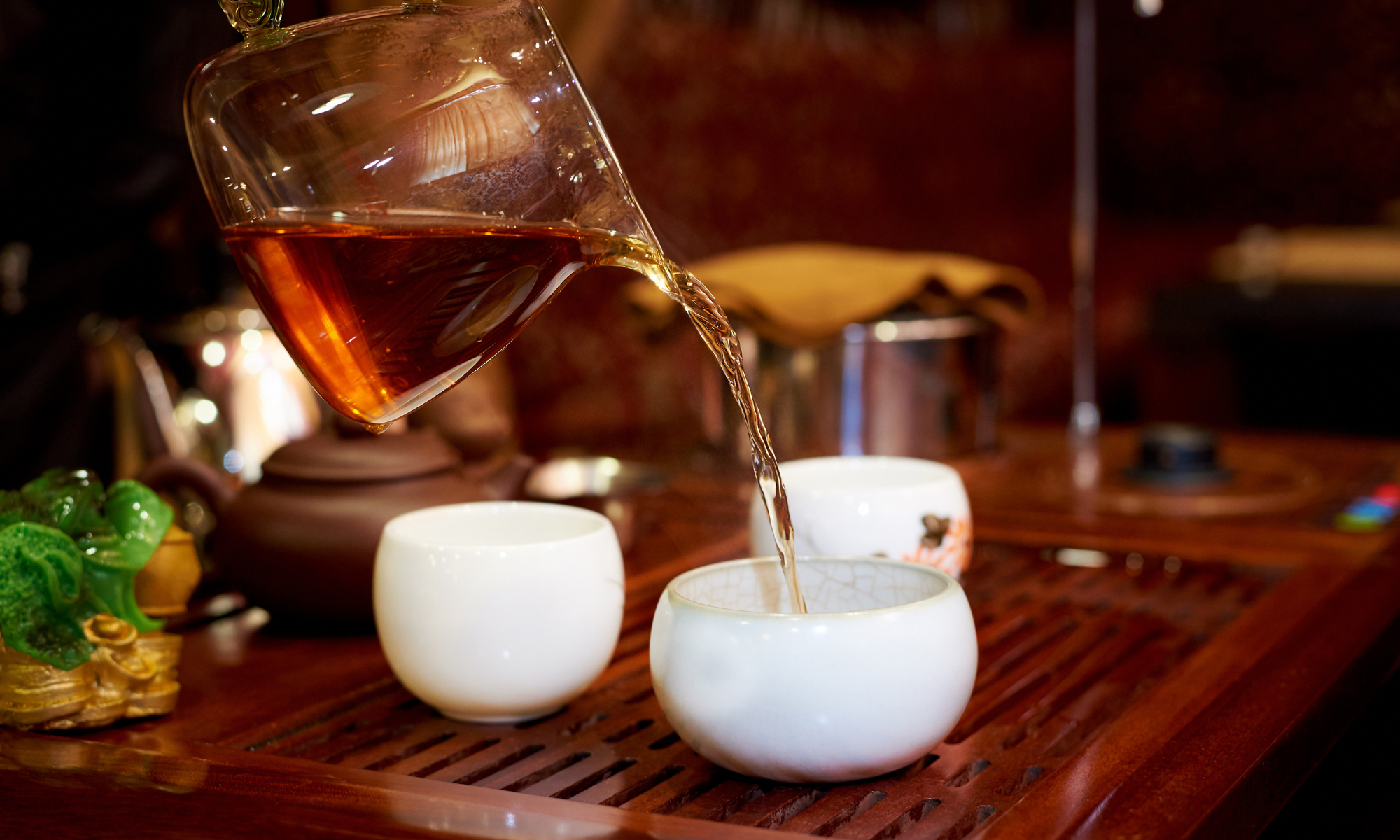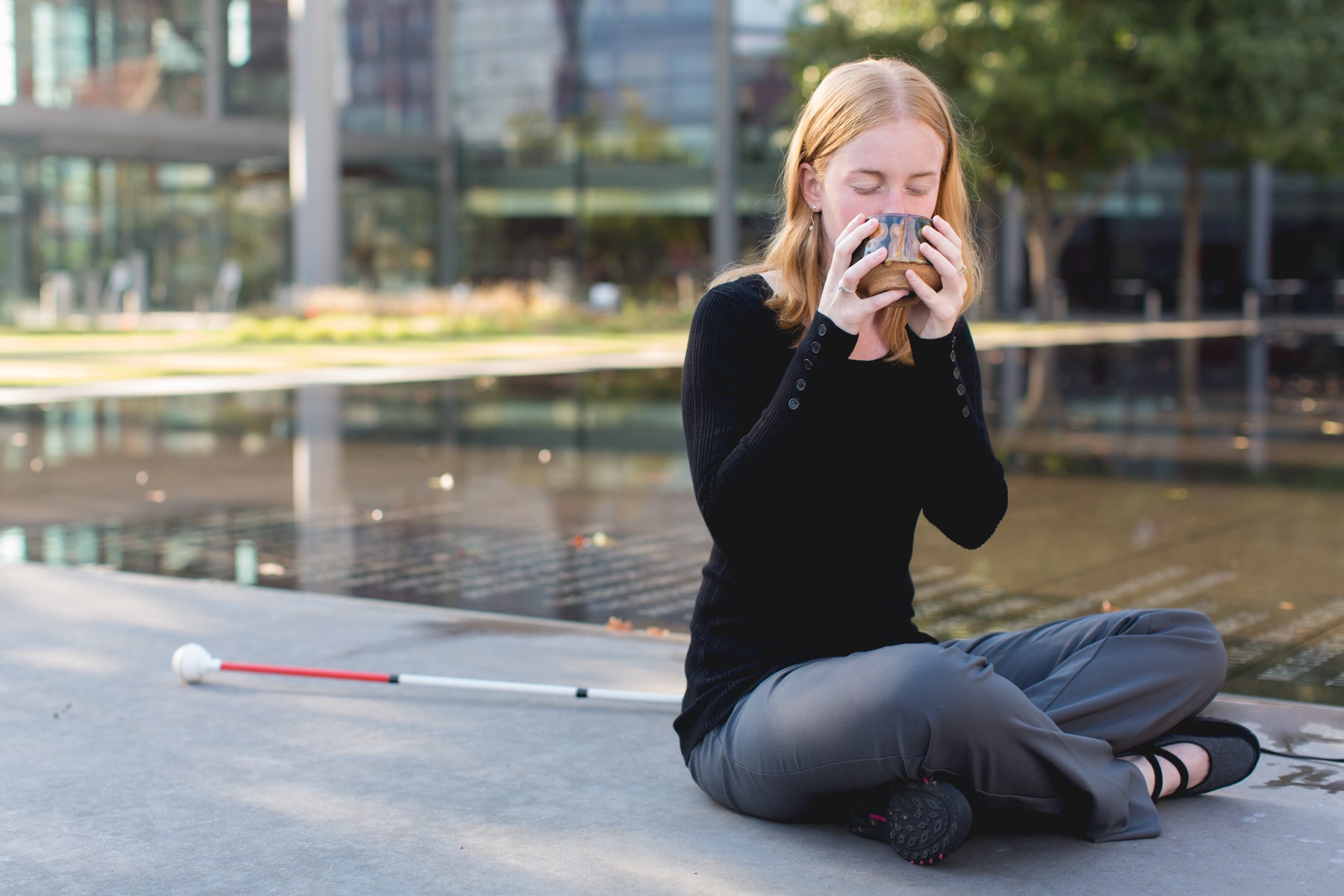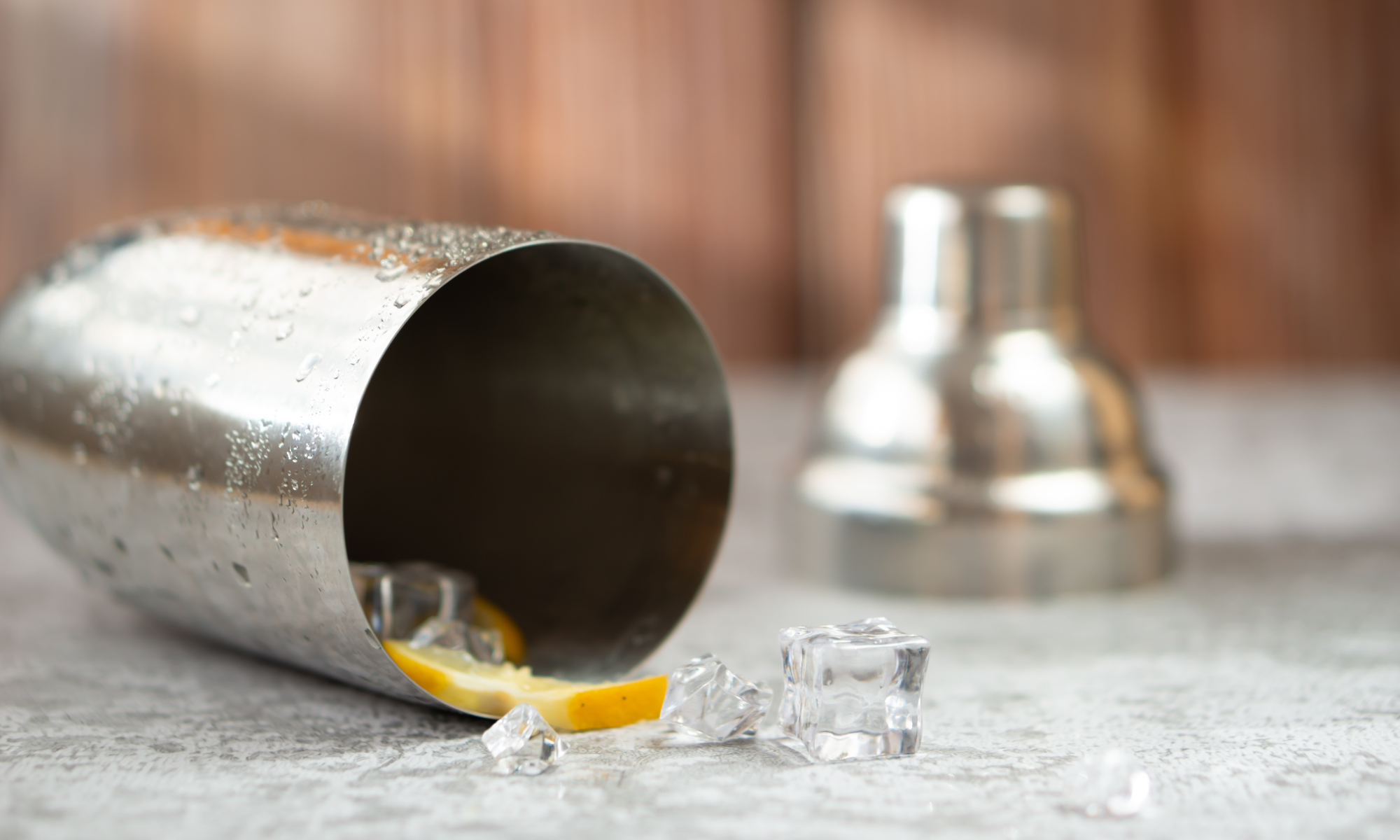What Is Gong Fu Cha?

“The art, besides being a delight in itself, is also a good deal cheaper than other forms of therapy…The whole experience is like a miraculous evening at the theater, the kind that leaves you wondering how such surprising delight was ever invented.”
James Norwood Platt, New Tea Lover’s Treasury
Simply put, gong fu cha is “tea with skill.” It is a way of making and serving tea that is meant to highlight the best in high-quality, naturally-processed (that is, no flavor added) teas. Performed well, it is a delight to the senses, and it can be a great way to “slow down” and be mindful. It is sometimes referred to as the Chinese Tea Ceremony. Unlike the Japanese Tea Ceremony, it has no formalized rules. While this way of making tea began in China, it is enjoyed today worldwide, including at The Cultured Cup. Let’s examine what it is and why it is so popular, and then make some recommendations for equipment and procedures to enjoy this unique method.
Gong fu cha most likely began as a practice in the Chaozhou region of China, located in the eastern part of Guangdong Province, in the 17th century. That area is centered close to large tea growing areas, including nearby Fujian Province and the Wuyi Mountains, the birthplace of oolong. Chaozhou is also close to the Phoenix Mountains, where Dan Cong oolongs originated. While the Chinese have enjoyed tea for millennia, loose-leaf tea began replacing compressed tea cakes and powdered tea in the 14th century. Over the several hundred years that followed, the availability of small clay pots and gaiwans evolved along with the new-style teas so that everyone could enjoy. So the practice of gong fu cha likely began as a way to highlight the flavors of these then new-style oolongs which, due to their processing, were/are capable of very complex flavors and multiple steepings of the same leaves.
To briefly summarize its uniqueness, during a gong fu cha session, a large amount of tea is placed into a small brewing vessel, such as a porcelain gaiwan or clay pot. Water is poured into the vessel for a short time, often as little as 15 seconds depending on the leaf (twisted leaves release their flavor sooner than balled leaves). The tea liquid is then poured out and divided among several very small cups (or first into a gong dao bei, or “fairness cup”), allowing everyone to drink tea that has been steeped equally long. After enjoying the tea, the same leaves are infused with hot water again, and the tea is steeped a bit longer before decanting into cups (usually 5–10 seconds longer). This process is repeated until the flavor of the tea fades. Later in the article, I’ll offer a more formalized version that is meant to be celebrated when you have guests to share your tea with. While the practice of gong fu cha likely began with brewing oolongs, it can be used in making any tea type. However, it works best with naturally-processed teas, since a tea with added flavorings (such as bergamot for an Earl Grey) will release most of its unique flavors in the first infusion.
What are the advantages of brewing tea this way? By steeping a larger amount of tea for a shorter time than Western-style brewing (using a teapot with the usual one teaspoon per cup and brewing 3–6 minutes, depending on the tea), the more desirable flavors of the tea, which are released quickly into hot water, are concentrated—sweet, floral, or fruity, among others—while the tannins, which produce astringency and bitterness with more infusion time, are minimized. In the coffee world, this is akin to the difference between espresso and drip methods. Also, by starting with a large amount of tea and infusing the leaves for a very short time initially, it is possible to re-steep the same leaves multiple times and enjoy a crescendo and eventual fading of flavors as you slowly increase the steeping time. Often in gong fu cha, the second or third steeping of a tea is the most flavorful. There is also the relaxation of slowing down to make the tea and (if others are present) share it. There is a pleasant repetition of taking the same leaves, carefully pouring water over them, and focusing on the “dance” of the water, leaves, tea ware, and taste, over the course of multiple infusions. Even in the midst of a busy workday, the beauty of the experience and the symphony of flavors savored can both calm and invigorate.
So what equipment is necessary to experience your own tea session? While true gong fu cha is more about the tea and the process of brewing it than anything else, it is helpful to have at least a few pieces of equipment:
Brewing vessels: A high-quality, glazed porcelain gaiwan is great for learning the true taste of any tea, as its non-porous surface will neither add nor subtract flavors. A clay pot, such as a Yixing pot, is also a popular choice, especially for teas having complex flavors but lots of tannins, such as darker oolongs and pu-erhs. Start with a gaiwan, and then as your budget allows, consider adding a clay pot and dedicating it to a particular type of tea. Clay is porous and will absorb some of the tannins of the tea you brew in it, enhancing the flavor. If you use only one tea (such as honey-orchid Dan Cong oolong) in a particular clay pot, over time the clay will absorb more flavor of the tea, and this flavor will find its way back into your cup! Most gong fu cha aficionados have two or three clay pots, sometimes of differing clay material (some clays are more or less porous and/or have different mineral compositions, affecting the taste), each dedicated to a different kind of tea. There are other brewing vessel choices, but these are the most basic ones.
Small cups: Usually a set of at least three or more, depending on how many guests you want to be able to serve. These are small so that each guest can get some of the tea liquor from each infusion. They also allow the tea to cool faster so you can enjoy it sooner! While drinking cups are essential, in some versions of gong fu cha there are also aroma cups. These are taller and narrower and are used to smell the aroma of the tea liquor before decanting into your drinking cup.
Gong dao bei: This is optional, but it is a handy “fairness cup,” which is really a small pitcher, allowing you to pour all of the tea liquid from your gaiwan or clay pot before decanting into individual cups. This ensures that each person receives the same “fair” flavor. If you decant directly into cups, the last person’s cup has tea that was infused longer than the first person’s cup. It is possible to “even out” the brew by pouring quickly into all of the cups lined up next to each other and going back and forth between them (as was first made popular in Chaozhou). If you have a tea table that drains, the table will catch all of the spills.
Tea table: This can be small or large depending on your needs, but the idea is the same: The table provides a surface for the tea ware to sit on top of, as well as a drainage tray beneath to catch any spills. During more formal versions of gong fu cha, water is poured onto the brewing vessel and cups to warm and/or clean them. The tray provides the convenience of catching the excess water without having to visit the sink until after your session ends. There are also “tea boats,” which are ceramic bowls with a raised center area to place your tea ware on, with a “moat” surrounding it into which the water falls.
Strainer and tools: A strainer is an accessory sized to fit over your gong dao bei or cups, which keeps tea leaves from entering the liquid you will drink. There are various tools designed to assist in preparing and serving tea, such as tongs for moving and handling the cups without using your hands (for cleanliness out of respect for your guests), tea scoops for scooping out the tea into your gaiwan/clay pot, picks for removing spent tea leaves from the brewing vessel when finished, and tea leaf presentation trays, designed to hold the leaves you intend to brew and pass around for guests to look at and smell before transferring to your gaiwan/clay pot for brewing. If you plan to brew tea from a compressed cake (such as a pu-erh), a pu-erh pick will make it easier to break off some leaves to infuse. It is also helpful to have one or two absorbent tea towels to dry your tea vessels and cups, as well as for any unanticipated spills.
Gram scale: This optional accessory can help to give you more consistent tasting results. While some oolongs, for instance, might benefit from 2 grams per ounce of water in your gaiwan, I find many greens do better with 1 gram per ounce due to their vegetal nature.
Kettle: Having a kettle that has adjustable temperature settings as well as a “hold” function, which allows you to set a temperature and hold it for the multiple infusions you’ll be doing, is ideal. I also prefer kettles with long, slow-flowing spouts, helping to make gentle yet precise pouring movements when infusing the leaves.
Tea pet: A “fun” accessory that adds some whimsy, this is a miniature ceramic pet (such as a frog, elephant, or cat) that sometimes changes color when you pour water over it. You place it on your tea table, and when you have water that needs to be poured out, you have a fun place to do so.
For an example of how a gong fu cha server might host a tea session for some guests, the following is a step-by-step procedure. For simplicity, the use of aroma cups has been omitted, though smelling the tea is part of the experience and can be done either by passing around the brewing vessel with its wet leaves to smell (my preferred method) or by smelling the tea liquor in one’s tasting cup. Keep in mind that the goal is to highlight the tea and not stress out too much over the process, as there are many variations practiced.
So there you have it! Just remember, the main idea is to enjoy the tea as well as the slow and careful way of making it!
Sources:
New Tea Lover’s Treasury by James Norwood Platt. Tea Society, 1999 (2nd edition)
The Story of Tea: A Cultural History and Drinking Guide by Mary Lou Heiss and Robert J. Heiss. Ten Speed Press, 2007




Comments